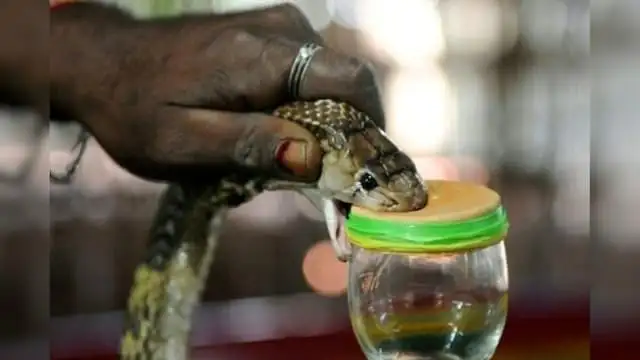Even the children of the Irula tribe know how to extract venom from the deadliest snakes.

The Irula tribe, located in southern India across the states of Kerala, Karnataka, and Tamil Nadu, is renowned for its exceptional skills in snake handling and venom extraction. This ancient craft, which has been passed down through generations, not only poses significant risks but also plays a crucial role in the production of anti-venom drugs that save countless lives from snake bites.
The Irula Tribe's Relationship with Snakes
Cultural Significance
For the Irula tribe, snakes are not objects of fear but rather integral to their livelihood and cultural heritage. While approximately 70% of snake species are non-venomous, the remaining 30% include some of the deadliest snakes in the world. The tribe’s expertise allows them to handle these dangerous reptiles with remarkable skill.
The Risks of Snake Bites
A single bite from a venomous snake can lead to severe health consequences, including paralysis, organ failure, and potentially death within hours. The Irula tribe's ability to manage these risks through their snake-handling techniques is vital for community safety and health.
Expertise in Venom Extraction
Training and Skills
Members of the Irula tribe, including men, women, and children, are trained from a young age to identify, catch, and extract venom from snakes. This specialized knowledge makes them one of the most sought-after snake-catching communities globally.
Targeted Snake Species
The tribe focuses on extracting venom from four particularly dangerous snake species:
- King Cobra
- Krait
- Russell’s Viper
- Indian Saw-Scaled Viper
The venom from these snakes is extremely potent, with even a single drop capable of causing death in humans.
Venom Collection Process
The venom extraction process involves carefully restraining the snake by the neck, opening its mouth, and allowing it to bite into a jar. The pressure from the bite causes the snake’s fangs to release venom, which is collected in the container. This meticulous method ensures the safety of both the handler and the snake.
The Irula Snake Catchers Industrial Co-operative Society
Establishment and Purpose
In 1978, the Irula Snake Catchers Industrial Co-operative Society was founded, largely due to the efforts of American herpetologist Romulus Whitaker. This organization was established to provide the Irula tribe with legal protection and a sustainable income source after the Indian government banned snake hunting under the Wildlife Protection Act of 1972.
Transition from Hunters to Saviors
Previously, the Irula tribe relied on hunting and selling snakes, often to British colonialists who valued snake skins. The ban on snake hunting initially threatened their livelihood, but Whitaker's initiative helped them shift from being snake hunters to snake saviors, focusing on venom extraction.
Current Operations and Economic Impact
Today, the co-operative has over 100 members and is licensed to catch and extract venom from up to 13,000 snakes annually. This venom trade generates approximately Rs 25 crore (around $3 million) each year, providing a significant economic boost to the community.
Ethical Practices and Regulations
Strict Guidelines
The extraction of snake venom in India is heavily regulated. The Irula tribe is permitted to collect venom only from the four approved snake species. Each snake is kept in a clay pot covered with a cotton cloth for up to 21 days, during which time venom can be extracted up to four times before the snake is released back into the wild.
Commitment to Sustainability
The extraction process is closely monitored to ensure the snakes are not harmed. Once the venom is collected, the snakes are returned to their natural habitats, promoting a balanced ecosystem and sustainable practices.
Conclusion
The Irula tribe exemplifies how traditional knowledge and practices can be transformed into a sustainable livelihood while contributing to public health. Their expertise in snake handling and venom extraction not only preserves their cultural heritage but also plays a critical role in the production of life-saving anti-venom drugs, highlighting the importance of indigenous knowledge in modern medicine.
- Art
- News and Politics
- Dance
- Make Money
- Entertainment
- Tips & Tricks
- Food
- الألعاب
- Cryptocurrency
- Health
- الافلام
- Music
- Science and Technology
- أخرى
- Life Style
- Religion
- Shopping
- Sports
- Travel and Insurance


